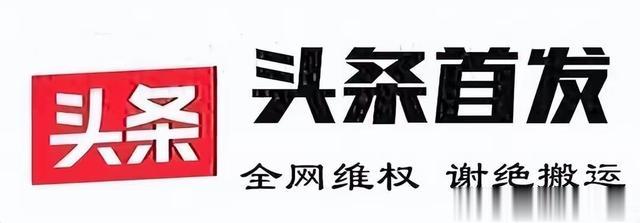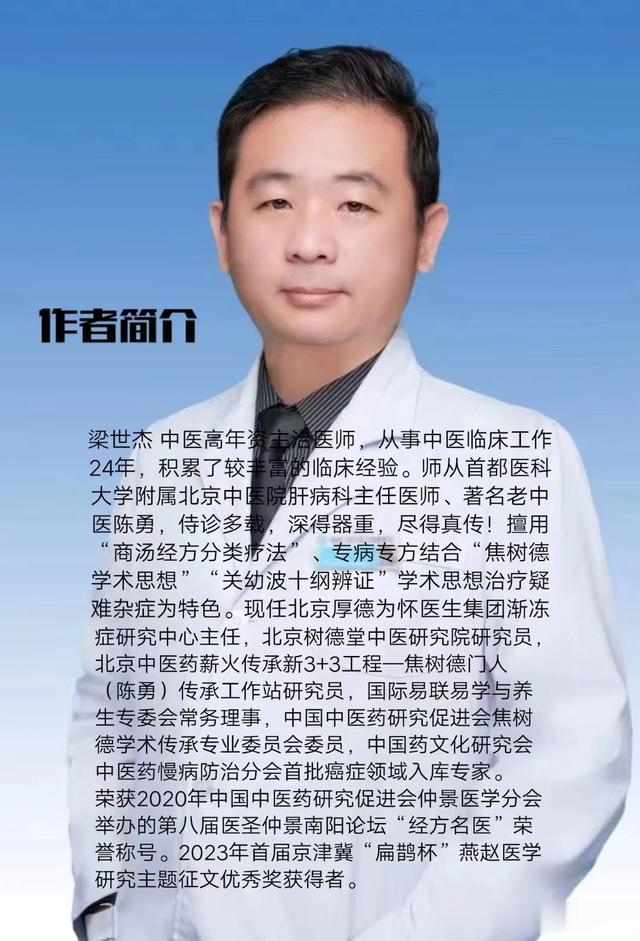摘要
本文旨在探讨督脉作为阳脉之海在人体生命活动中的核心作用,以及其与脊柱健康之间的紧密联系。督脉作为中医经络系统中的重要组成部分,总督一身之阳气,对人体脏腑、四肢的功能活动具有统摄和推动作用。同时,脊柱作为督脉的实体基础,其健康状态直接影响到督脉阳气的运行与分布。梁世杰科研团队通过分析督脉阳气的生理功能、脊柱相关性疾病的研究进展,以及两者之间的内在联系,提出维护脊柱健康对于促进督脉阳气流通、保障人体正常功能活动具有重要意义。
关键词:督脉;阳气;脊柱;脊柱相关性疾病;中医经络

引言
中医理论认为,人体生命活动的正常进行依赖于阳气的统摄和推动作用。督脉作为阳脉之海,总督一身之阳气,是人体阳气汇聚与运行的中心。同时,脊柱不仅是人体的支撑结构,更是脊髓神经中枢功能的载体,与督脉在生理和病理上存在着密切关联。近年来,随着脊柱相关性疾病研究的不断深入,人们逐渐认识到脊柱健康对于维护人体整体功能的重要性。梁世杰科研团队将从督脉阳气的生理功能、脊柱相关性疾病的研究进展以及两者之间的内在联系三个方面进行论述,以期为推动中医理论与现代医学的融合与发展提供新的思路。
正文
一、督脉阳气的生理功能
(一)督脉是什么
督脉是中医经络系统中的一条重要经脉,位于人体背部正中,总督一身之阳气。它起源于胞中,下出会阴,沿脊柱上行,至项后风府穴进入颅内,络脑,并由项沿头部正中线,经头顶、额部、鼻部、上唇,到上唇系带处。督脉与六阳经有联系,称为“阳脉之海”,具有调节阳经气血、反映脑髓和肾的功能以及主宰一身阳气的功能。

(二)阳气对人体的重要性
阳气是人体生命活动的原动力,主人体的一切功能活动。人体一切脏腑、四肢功能活动都有赖于阳气的统摄和推动作用。阳气充足时,人体功能活动旺盛,表现为精力充沛、面色红润、思维敏捷等;阳气不足时,则会出现畏寒肢冷、神疲乏力、面色苍白等症状。因此,维护阳气的正常流通与分布对于保障人体健康具有重要意义。
(三)督脉阳气的作用机制
督脉阳气通过经络系统输布全身,对脏腑、四肢等器官组织的功能活动进行调控。一方面,督脉阳气能够激发和推动脏腑的生理功能,如心主血脉、肺主呼吸、脾主运化等;另一方面,督脉阳气还能够促进气血的生成与运行,为四肢提供充足的营养和能量。此外,督脉阳气还与脑髓和肾的功能密切相关,能够调节人体的生长发育、生殖繁衍以及精神意识活动。

二、脊柱相关性疾病的研究进展
(一)脊柱相关区带病概念的提出
脊柱相关区带病概念是由美国医生D.D.Palmder在1885年首先提出的。他提出了“脊柱与疾病相关理论”,认为脊柱的病变不仅局限于脊柱本身,还可能影响到与之相关的内脏器官和组织。这一理论为后来的脊柱相关性疾病研究奠定了基础。
(二)脊柱生物力学与疾病的关系
脊柱作为人体的支撑结构,承受着身体的重量和外界的冲击。脊柱的生物力学特性对于维持其正常功能和保护内脏器官具有重要作用。当脊柱受到损伤或发生退行性变时,其生物力学特性发生改变,可能导致脊柱稳定性下降、神经根受压、脊髓损伤等病理变化。这些病理变化不仅影响脊柱本身的功能,还可能通过神经、血管等途径影响到内脏器官的功能活动。

(三)脊柱生物信息学与疾病的关系
脊柱不仅是人体的支撑结构,还是脊髓神经中枢功能的载体。脊髓神经中枢通过神经纤维与全身各器官组织相连,传递着各种生物信息。当脊柱发生病变时,可能干扰脊髓神经中枢的正常功能,导致生物信息的传递受阻或紊乱。这种生物信息的紊乱可能引发一系列内脏器官的病理变化,如心血管疾病、呼吸系统疾病、消化系统疾病等。
三、督脉阳气与脊柱健康的内在联系
(一)督脉阳气与脊柱生物力学的关联
督脉阳气作为人体阳气的汇聚与运行中心,对脊柱的生物力学特性具有重要影响。一方面,督脉阳气的充足与流通能够维持脊柱的稳定性,防止脊柱发生退行性变;另一方面,督脉阳气的调节作用还能够促进脊柱周围肌肉、韧带的血液循环和营养供应,增强脊柱的抗损伤能力。因此,维护督脉阳气的正常流通与分布对于预防脊柱相关性疾病具有重要意义。

(二)督脉阳气与脊柱生物信息学的关联
督脉阳气不仅与脊柱的生物力学特性密切相关,还与脊柱生物信息学的功能活动紧密相连。督脉阳气通过经络系统输布全身,对脊髓神经中枢进行调控。当督脉阳气不足或流通受阻时,可能干扰脊髓神经中枢的正常功能,导致生物信息的传递受阻或紊乱。这种生物信息的紊乱可能引发一系列内脏器官的病理变化,如心血管疾病、呼吸系统疾病等。因此,维护督脉阳气的正常流通与分布对于保障脊髓神经中枢的正常功能具有重要作用。

(三)临床案例分析
以颈椎病为例,颈椎病是一种常见的脊柱相关性疾病。其发病机制与督脉阳气的不足和流通受阻密切相关。当颈椎发生退行性变时,可能导致颈椎稳定性下降、神经根受压等病理变化。这些病理变化不仅影响颈椎本身的功能,还可能通过神经、血管等途径影响到头部和上肢的功能活动。临床表现为颈部疼痛、僵硬、头晕、头痛、上肢麻木等症状。通过中医针灸、推拿等方法调理督脉阳气,可以促进颈椎周围肌肉、韧带的血液循环和营养供应,增强颈椎的稳定性;同时,还可以调节脊髓神经中枢的功能活动,改善生物信息的传递和分布,从而缓解颈椎病的症状。

结论
梁世杰科研团队认为督脉作为阳脉之海,总督一身之阳气,对人体脏腑、四肢的功能活动具有统摄和推动作用。脊柱作为督脉的实体基础,其健康状态直接影响到督脉阳气的运行与分布。通过本文的分析可以看出,督脉阳气与脊柱健康之间存在着密切的内在联系。维护脊柱健康对于促进督脉阳气流通、保障人体正常功能活动具有重要意义。因此,在预防和治疗脊柱相关性疾病时,应充分重视督脉阳气的调理作用,采取中医针灸、推拿等方法调理督脉阳气,以促进脊柱周围肌肉、韧带的血液循环和营养供应,增强脊柱的稳定性;同时,还应注重调节脊髓神经中枢的功能活动,改善生物信息的传递和分布,从而达到治疗疾病、恢复健康的目的。
作者简介:梁世杰 中医高年资主治医师,从事中医临床工作24年,积累了较丰富的临床经验。师从首都医科大学附属北京中医院肝病科主任医师、著名老中医陈勇,侍诊多载,深得器重,尽得真传!擅用“商汤经方分类疗法”、专病专方结合“焦树德学术思想”“关幼波十纲辨证”学术思想治疗疑难杂症为特色。现任北京厚德为怀医生集团渐冻症研究中心主任,北京树德堂中医研究院研究员,北京中医药薪火传承新3+3工程—焦树德门人(陈勇)传承工作站研究员,国际易联易学与养生专委会常务理事,中国中医药研究促进会焦树德学术传承专业委员会委员,中国药文化研究会中医药慢病防治分会首批癌症领域入库专家。荣获2020年中国中医药研究促进会仲景医学分会举办的第八届医圣仲景南阳论坛“经方名医”荣誉称号。2023年首届京津冀“扁鹊杯”燕赵医学研究主题征文优秀奖获得者。

The Chief of the meridian: an in-depth analysis of the relationship between the sea of the chakra and spinal health
Abstract
This paper aims to explore the central role of the esophagus as the sea of meridians in human life activities and its close connection to spinal health. As an important component of the traditional Chinese meridian system, the chief meridian is the body's yang qi, which has a controlling and promoting effect on the functional activities of the human organs and limbs. At the same time, as the solid basis of Du Meridian, the state of health of spinal column directly affects the operation and distribution of Yang Qi in Du Meridian. Liang Shijie's research team analyzed the physiological function of the meridian gas, the research progress of spine-related diseases, and the inherent link between the two, and proposed that maintaining spine health is important for promoting the circulation of the dorsal gas and safeguarding normal functional activities of the human body.
Keywords: acupuncture; Positive energy; The spine; Spine-related diseases; Traditional Chinese Medicine Acupuncture
Introduction
According to the theory of traditional Chinese medicine, the normal functioning of human life activities depends on the regulation and promotion of yang qi. As the sea of yang meridians, the dantian governs the yang qi of the whole body and is the center for the gathering and operation of human body yang qi. At the same time, the spine is not only the supporting structure of the human body, but also the carrier of the function of the spinal cord nerve center, and there is a close physiological and pathological relationship between the dantian and the spine. In recent years, with the continuous deepening of research on spinal-related diseases, people have gradually realized the importance of spinal health in maintaining the overall function of the human body. This article will discuss the physiological function of yang qi in the dantian, the research progress of spinal-related diseases, and the internal relationship between the two, in order to provide new ideas for promoting the integration and development of traditional Chinese medicine theory and modern medicine.
text
I. Physiological function of pulse positive energy
(1) What is the acupuncture?
The meridian is an important meridian in the Chinese traditional meridian system, located in the middle of the back of the human body, and the meridian is the body's yang qi. It originated in the cell, under the perineum, up along the spine, to the head after the Fengfu point into the brain, collaterals, and from the head along the median line, through the head, forehead, nose, upper lip, to the frenulum of upper lip. The meridian is associated with the six meridians, known as the "sea of meridians," and has the function of regulating the meridians and blood, reflecting the functions of the brain marrow and kidneys, and dominating the body's qi.
(2) The Importance of Qi to the Human Body
The yang is the driving force of human life activities, and all functional activities of the master body. All the functional activities of the human body's internal organs and limbs depend on the suppression and promotion of positive gas. When there is sufficient oxygen, the human body's functional activities are strong, showing energy, red face, sharp mind, etc. When there is a lack of energy, symptoms such as chills and chills, fatigue and paleness will occur. Therefore, maintaining the normal circulation and distribution of the positive gas is of great significance for safeguarding human health.
(3) The mechanism of action of the meridian yang
The acupuncture qi is transmitted through the meridian system throughout the body to regulate the functional activities of organs and tissues such as the internal organs and limbs. On the one hand, Du Meridian Yang Qi can stimulate and promote the physiological functions of the viscera, such as the heart governing blood, the lung governing breathing, the spleen governing transportation and transformation, etc. On the other hand, the meridian yang can also promote the production and operation of qi and blood, providing adequate nutrition and energy for the limbs. In addition, Du Meridian Yang Qi is closely related to brain and renal functions, and can regulate the growth and development of the human body, reproductive and spiritual activities.
II. Research Advances in Spine Related Diseases
(1) The introduction of the concept of spinal-related disorders
The concept of spinal band disease was first proposed by the American physician D. D. Palmder in 1885. He proposed "the spine-disease-related theory," which suggested that lesions in the spine were not limited to the spine itself, but could affect the internal organs and tissues associated with it. This theory laid the foundation for later research into spinal-related diseases.
(2) The relationship between spinal biomechanics and disease
As the support structure of the human body, the spine bears the weight of the body and the impact of the outside world. The biomechanical properties of the spine play an important role in maintaining its normal function and protecting the internal organs. When the spine is injured or degenerative, its biomechanical properties change, which may lead to spinal instability, nerve root compression, spinal cord injury and other pathological changes. These pathological changes not only affect the function of the spine itself, but also may affect the functional activities of internal organs through nerves, blood vessels, etc.
(3) Spine bioinformatics and disease relationship
The spine is not only the support structure of the human body, but also the carrier of nerve center functions of the spinal cord. The spinal nerve center is connected with the whole body through the nerve fiber, transmitting various biological information. When a disease occurs in the spine, it may interfere with the normal function of the nerve centers of the spinal cord, causing the transmission of biological information to be blocked or disrupted. The disorder of biological information may cause a series of pathological changes of internal organs, such as cardiovascular disease, respiratory system disease, digestive system disease and so on.
III. Inherent link between acupuncture and spinal health
(1) The relationship between acupuncture and spinal biomechanics
As the center of the convergence and operation of human positive energy, the acupuncture breath has an important influence on the biomechanical properties of the spine. On the one hand, the adequacy and circulation of the pulse can maintain the stability of the spine and prevent degenerative changes in the spine; On the other hand, the regulation of paracetamol can also promote the blood circulation and nutrient supply of the muscles and ligaments around the spine, enhancing the ability of the spine to resist injury. Therefore, maintaining the normal flow and distribution of pulmonary positive energy is of great significance for the prevention of spinal related diseases.
(ii) Relationship between acupuncture and spinal bioinformatics
Pulmonary oxygen is not only closely related to the biomechanical properties of the spine, but also to the functional activities of spinal bioinformatics. The acupuncture qi is transmitted through the meridian system throughout the body to regulate the nerve centers of the spinal cord. When there is insufficient or blocked circulation of the meridian, it may interfere with the normal function of the nerve centers of the spinal cord, resulting in blocked or disturbed transmission of biological information. The disorder of biological information may cause a series of pathological changes of internal organs, such as cardiovascular disease, respiratory system disease and so on. Therefore, maintaining the normal flow and distribution of pulmonary positive energy plays an important role in safeguarding the normal function of the nerve center of the spinal cord.
(iii) Clinical case analysis
Take cervical spondylosis as an example. Cervical spondylosis is a common spinal disorder. Its pathogenesis is closely related to the insufficiency and blocked circulation of the pulmonary artery. When a degenerative change occurs in the cervical spine, it may lead to pathological changes such as decreased stability of the cervical vertebral spine and pressure on the nerve root. These pathological changes not only affect the function of the cervical spine itself, but also may affect the functional activities of the head and upper limbs through nerves, blood vessels, etc. Clinical manifestations include neck pain, stiffness, dizziness, headache, numbness in the upper limbs and other symptoms. The conditioning of the acupuncture and massage can promote the blood circulation and nutrient supply of the muscles and ligaments around the cervical spine and enhance the stability of the cervical vertebrae through Chinese medicine acupuncture, massage and other methods. At the same time, it can also regulate the functional activities of the spinal nerve center, improve the transmission and distribution of biological information, so as to alleviate the symptoms of cervical spondylosis.
Conclusion
Liang Shijie's research team believes that the meridian is a sea of meridians, and the chief executive's body of yang has a controlling and promoting effect on the functional activities of the human organs and limbs. As the solid basis of Du Meridian, the state of health of spinal column directly affects the movement and distribution of Yang Qi in Du Meridian. Through the analysis of this article, it can be seen that there is a close inherent link between acupuncture yang and spinal health. Maintaining the health of the spine is of great significance for promoting the circulatory circulation of the meridian and ensuring the normal functional activities of the human body. Therefore, when preventing and treating spine-related diseases, fully emphasis should be placed on the conditioning of the meridian yang qi, taking traditional Chinese acupuncture and massage methods to conditioning the meridian Yang qi to promote the blood circulation and nutrient supply of the muscles and ligaments around the spine and enhance the stability of the spine; At the same time, attention should also be paid to regulating the functional activities of the spinal nerve center and improving the transmission and distribution of biological information to achieve the purpose of treating disease and restoring health.
Author Bio: Liang Shijie is a senior medical practitioner in traditional Chinese medicine. He has been engaged in traditional medicine clinical work for 24 years and has accumulated a wealth of clinical experience. Following Chen Yong, chief physician of liver disease at Beijing Traditional Medicine Hospital, affiliated with Capital Medical University, and renowned old Chinese medicine, he has been treated for many years and received great attention. He specializes in the treatment of difficult diseases using "conversational traditional therapy" and special treatments combined with the academic ideas of Jiao Shude and Guan Yubo's ten-level diagnosis.He is currently the director of the Center for Diffusion Research of Dr. Houde Wei Group in Beijing, a researcher at the Shude Tang Institute of Chinese Medicine, and a fellow at the new 3 + 3 project of traditional Chinese medicine flame inheritance in Beijing - a scholar at the inheritance work station of Jiao Shude's protégés (Chen Yong),He is a standing committee member of the International Expert Committee on E-learning and Health Care, a member of the Jiao Shude Academic Heritage Special Committee of the Chinese Association for the Advancement of Chinese Medicine Research, and the first cancer specialist to be included in the chapter of the Chinese Pharmaceutical Culture Research Association. Won the 2020 China Association for the Promotion of Traditional Chinese Medicine Zhongjing Medical Branch held the eighth session of the Medical Saint Zhongjing Nanyang Forum "Classic Prescription Famous Doctor" honorary title. The winner of the first Beijing-Tianjin-Hebei "Pingui Cup" Yanzhao Medical Research Essay Award in 2023.
